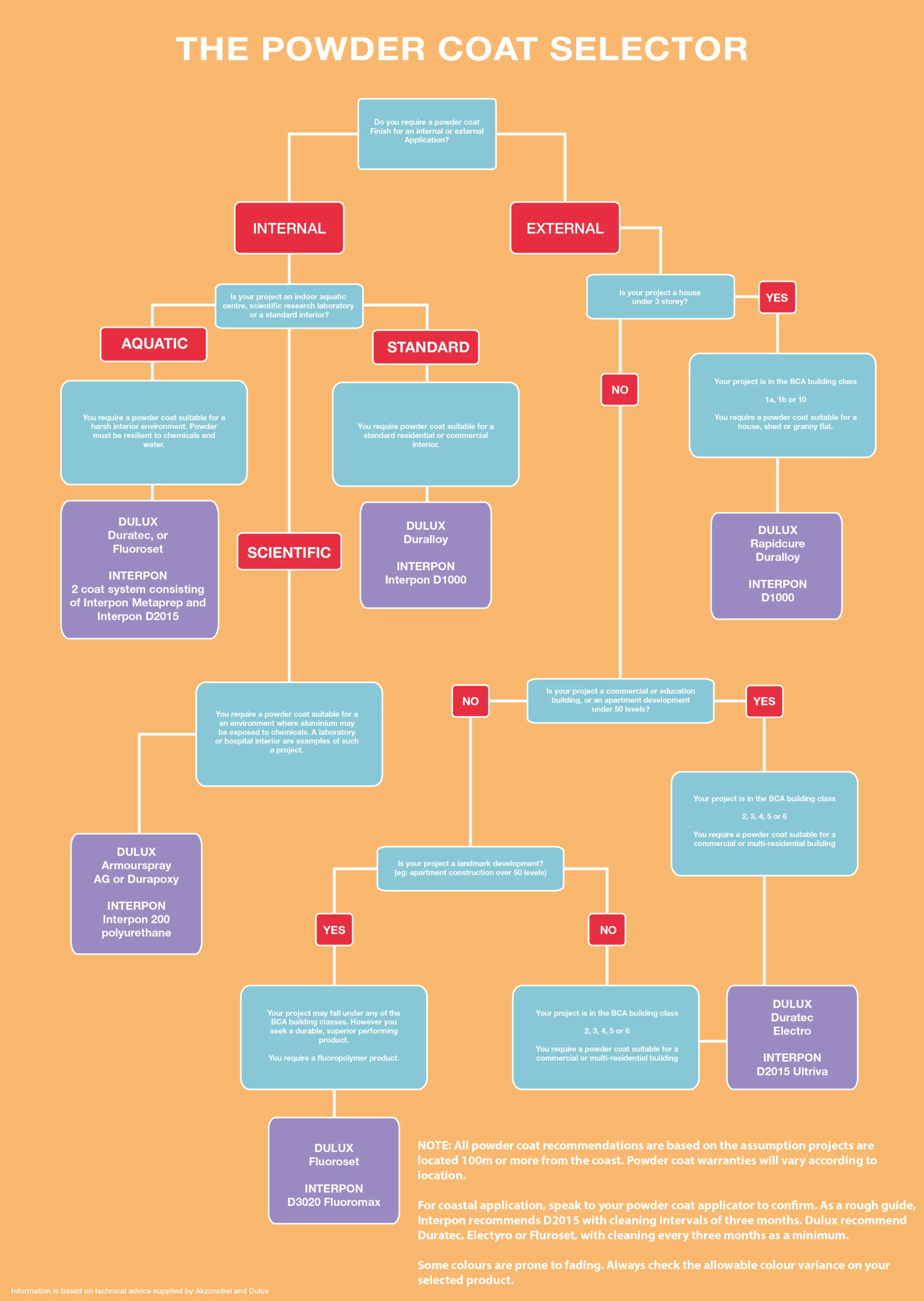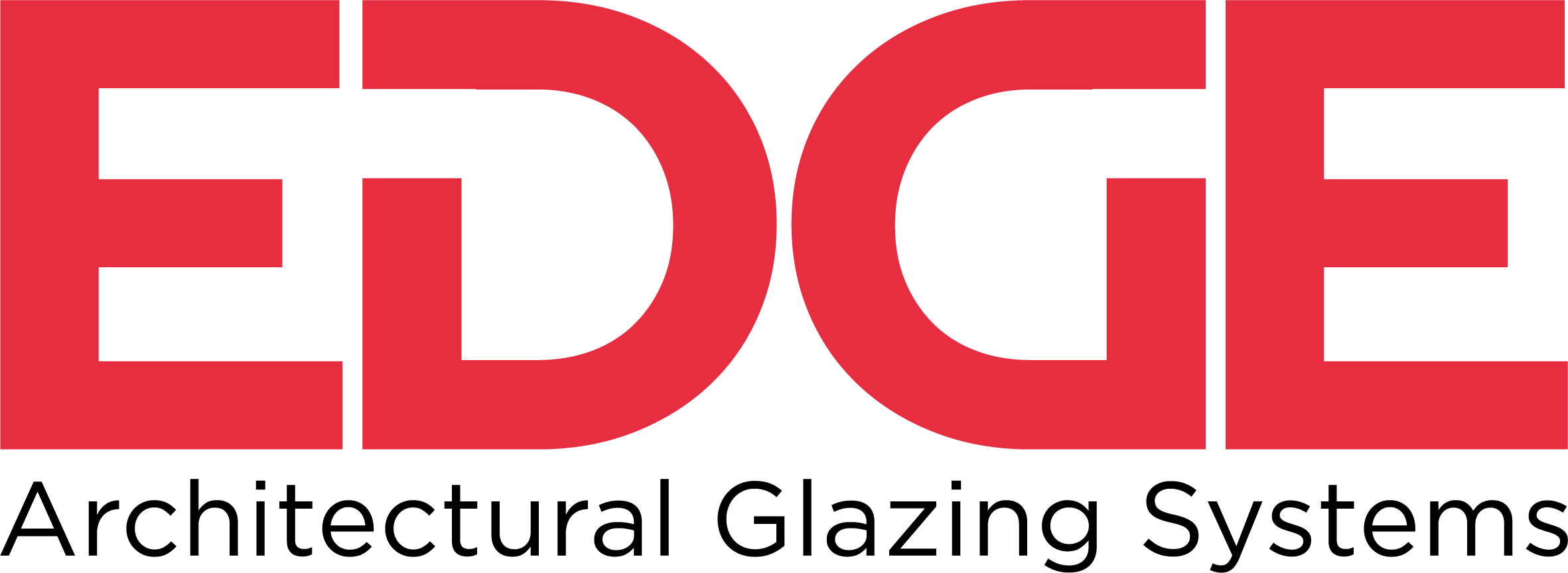26 Sep Aluminium finishing made easy
Find your aluminium finish
Aluminium finishing can be a specification nightmare. EDGE Architectural would like to make the specification process easier for you. Let us put some myths to rest, and help you specify the correct aluminium finish for your project.
EDGE Architectural designs and manufactures superior architectural framing systems for the Australian construction market. U-MAX thermally broken, MAX double glazed, and GEN single glazed suites are designed for performance and aesthetic. High performing as the EDGE range may be, select an inappropriate aluminium coating, and no framing system, not even EDGE, stands a chance against corrosion from climate exposure and atmospheric pollution. Finish specification is far more complex than just deciding between powder coating or anodising. Sure this decision is part of the process, but within these two finish options, building location, classification and building code requirements, also must be reviewed in the process of identifying a suitable finish. The only way to guarantee long term performance from aluminium, is to specify a finish suitable for your project.
To anodise or powder coat?
There are proponents for both anodising and powder coating. There is no doubt the two technologies appear different, and if a “living” finish showing a real metal surface is needed, anodising is the only choice (though newer powder coating finishes with a pattern can also give the effect of seeing metal grain). A drawback of anodising is that it can only be applied to aluminium, while powder coating can be applied to steel, aluminium, plastics, and wood, meaning different elements can be made to match.
There is a belief anodising is superior to powder coating when long-term performance outside is required. This is a myth. Cheaper grades, and bright anodising colours, have worse performance than cheaper grades of powder coating.
Let’s take a closer look at both finishing options…
Colour
In anodising, colour can be introduced using electrolytic deposition of a metal or metal oxide giving colours from pale champagne to bronze and black. Dyes can also be used to produce exotic colours, either added to natural anodising or in combination with electrolytically coloured anodising. Colour warranties for anodising are typically quite comprehensive and for long periods. In powder coating, almost any colour or effect is possible, from white and black to bright colours and metallic shades. For 99 percent of shades, colour warranties of 10-20 years are typical. Bright shades such as red or yellow use pigments that will fade, so often have lower warranties.
Scratching
Anodising rightly has a reputation for being tough. Powder coatings are also tough. Sand abrasion tests, ensure a coatings potential durability against scratching. If scratching does occur, powder coating can be repaired – making it a popular choice for institutional developments. Anodising, while tough can scratch, and when it does there is no way to repair it. When specifying anodising, take into consideration the risk of day to day scratch damage.
Which should you specify?
An anodised finish is very attractive. It’s sleek and shows the natural metal grain. Achieving a high-quality, consistent and weather-resistant anodised finish can be problematic. Both powder coat and anodised finishes give similar long-term performance when specified correctly, and there are long-standing track records for each technology on major projects going back to the 1970s. The final cost of the finish will depend on the specification. A weak anodising specification will have lower cost in the short-run, but lead to later problems. A strong anodising specification will cost more than comparable quality powder coating finishes.
With either finish, choosing a low price product will save cost in the short term, but repairs and maintenance bills will mean cost of ownership is higher in the long term.
Powder coating generally give less problems for fabricators. They are repairable, batch-to-batch colour variation is less, and other substrates can be coated with the same material. Sustainability of aluminium is already good, but arguments for which finish most enhances sustainability depends on how this is measured. Modern powder coatings produce virtually no waste in production or application and can last on a building potentially for 40 years or more. There are many false statements and biased opinions in the market regarding powder coating and anodising. When selecting your aluminium finish, remember it’s more important to specify a suitable grade of powder coating or anodising, rather than concerning yourself with selecting one technology over the other. Poorly specified aluminium coatings, be it powder coating or anodising, will perform poorly. Specify the correct grade for application, and both powder coating and anodising are durable long lasting finish options. One is not ‘better’ than the other, best performance is determine by specifying the correct grade of finish for a projects location, building class and exposure to atmospheric classifications.
(Information Source: Akzo Nobel)
Which grade of anodising should you be specifying?
Click on the image below to enlarge the diagram. Answer each question to identify a suitable grade of anodising for your project.

Which powder coat does your project require?
Click on the image below to enlarge the diagram. Answer each question to identify a suitable powder coat for your project.



